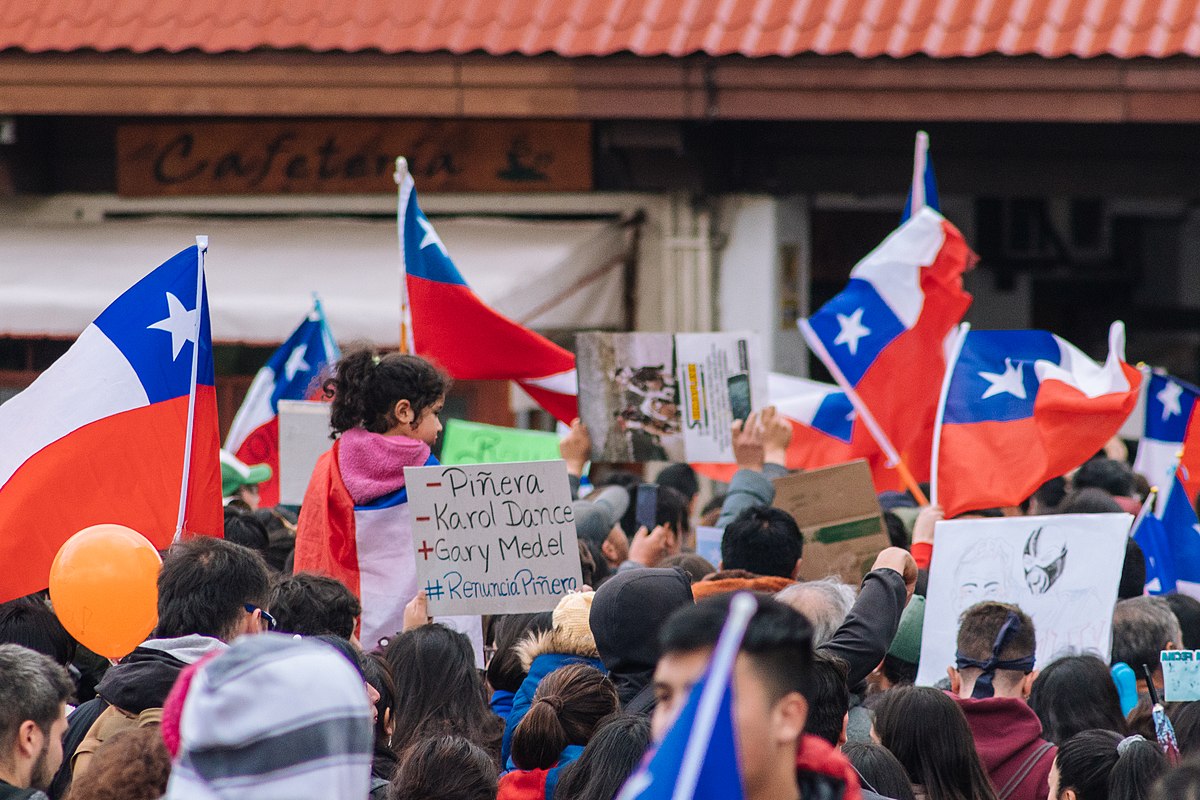Chile Protests: Organizing for a better world
Known as the Estallido Social or Social Outburst, the massive protests in Chile originated in response to a raise in the Santiago Metro’s subway fare, but soon escalated into a larger social critique.
*Fourth article in a series on protests around the world*
**TW: Police brutality, Police killings, arrest, torture**
A 4% increase in subway fares in Santiago, Chile, the nation’s capital and largest city, sparked a resistance that escalated into a sustained movement against longstanding and increasing injustices in the country.
In her article, “18 Killed as Hundreds of Thousands of Protestors Take to the Streets in Chile. Here’s What to Know,” Rachael Bunyan explained that the initial hike in subway fares led to “high school pupils and university students jump[ing] over ticket barriers to evade paying the increased fares. The local police took action and confronted the students in metro stations and violent clashes ensued.”
This, we would come to find out, was only the beginning as the students “were joined in a mass demonstrations by many other Chileans who are frustrated with rising living costs, low wages and one of the worst rates of inequality in Latin America,” said Bunyan. Across the country, people began to take to the streets in solidarity with those in Santiago to defy government curfews and demand change.
According to Amanda Taub in her article, “‘Chile Woke Up’: Dictatorship’s Legacy of Inequality Triggers Mass Protests,” within the first few days, the subway fare increase was scrapped. But when that proved ineffective, President Sebastián Piñera “deployed the military in Chile’s streets for the first time since the country’s transition to democracy.”
“When that didn’t quell the protests, Mr. Piñera went on television to ask for forgiveness and promise higher pensions, better health coverage, higher taxes for the rich and pay cuts for politicians,” Taub continued, “Later, he asked his cabinet to resign.” But this did not stop the demonstrations.
Open confrontations with the Carabineros de Chile — the national police force — and the military led to increasing levels of violence at the demonstrations. Faced with a barrage of rubber bullets and tear gas, protestors refused to disperse. Even the use of water cannons would not dissuade them.
With increasing levels of violence at the hands of the police leading to arrests, injuries and even deaths, there was a desperate need for improved tactics in order to preserve the movement and protect each other from harm. Some protestors formed shield lines to protect others from the water cannon blasts along with other projectiles — such as rubber bullets and tear gas canisters. While others set up burning barricades or launched projectiles back at the police.
Aside from standing toe to toe with police, other forms of resistance were also taking place. Cacerolazo, a form of protest where people make noise by banging pots, pans and other utensils together in order to call for attention, was commonplace. More extreme forms of protest included the looting of supermarkets and other stores.
Santiago Metro stations were seized and vandalized, some were even burned down. Petrol stations were set on fire while truck and taxi drivers brought the highways of Santiago to a halt. Diversity of tactics is key when it comes to creating a lasting movement that inspires real change.
Since Oct. 2019, protestors have not given up their demands for justice. Thousands have been arrested and faced arbitrary detention and even torture while in custody. Thousands have been injured due to the increasing levels of violence. Over thirty have died, with some being directly linked to the actions of police.
Ultimately, the state’s efforts to silence the voices of those that would demand justice failed. And in 2020, almost a year after the initial protests began, a referendum was held which saw Chilean voters overwhelmingly approve writing a new constitution by a convention.
“Overhauling the constitution could address some of the disparity, many protesters hope,” said John Bartlett and Rick Noack in the article “Chile braces for constitutional referendum in the wake of violent clashes.”
As Bartlett and Noack pointed out, one 26-year-old protestor, Fabiana Carvajal, spoke to this hope. “We need to show that we still want to change this country, we need to send the message that the system is unfair and tied to the Pinochet dictatorship — Chile needs a fresh start under a system that considers all of us.”
Power is in the hands of the people, and when we come together in solidarity we can begin to recognize this power and act on it. Sustained mass protests are an effective way to accomplish this. Disturbing the status quo and creating unrest on our terms is what forces those that have consolidated power in their ivory towers to actually care about what happens down here on the street.
Autonomous, organic movements sparked from everyday occurrences, such as increased subway fare, can be signifiers of the larger structural changes needed to create lasting prosperity. These spur-of-the-moment protests have the power to turn into something far greater, as is evident by what was seen in Chile, along with many other places around the world.
It is important to see these small movements for more than just what they seem to be on the surface level. We must instead look to the potential of these events. We must build upon the momentum that already exists and make clear connections between seemingly separate issues.
There is often a driving force of injustice that manifests itself as many different things, but treating the symptoms will not cure the illness.



